Carrot Macaron Template
Hello friends, today I will share my Carrot Macaron Template with you. Use this template to pipe super cute carrot shaped macarons. I filled them with carrot cake and cream cheese frosting.
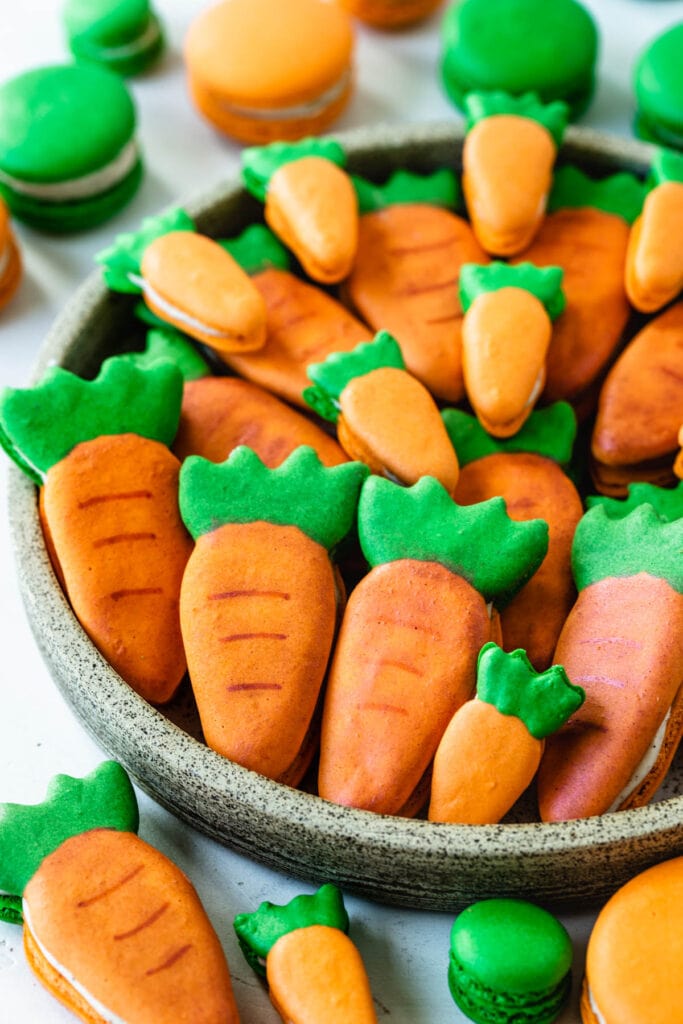
Let’s start off with the template.
This post may contain affiliate links. I earn a commission from qualified purchases. Please read our Privacy policy here.
Click below to download the free Carrot Macaron Template.
Print the template, place under your baking mat or parchment paper so you can pipe the carrot shapes.
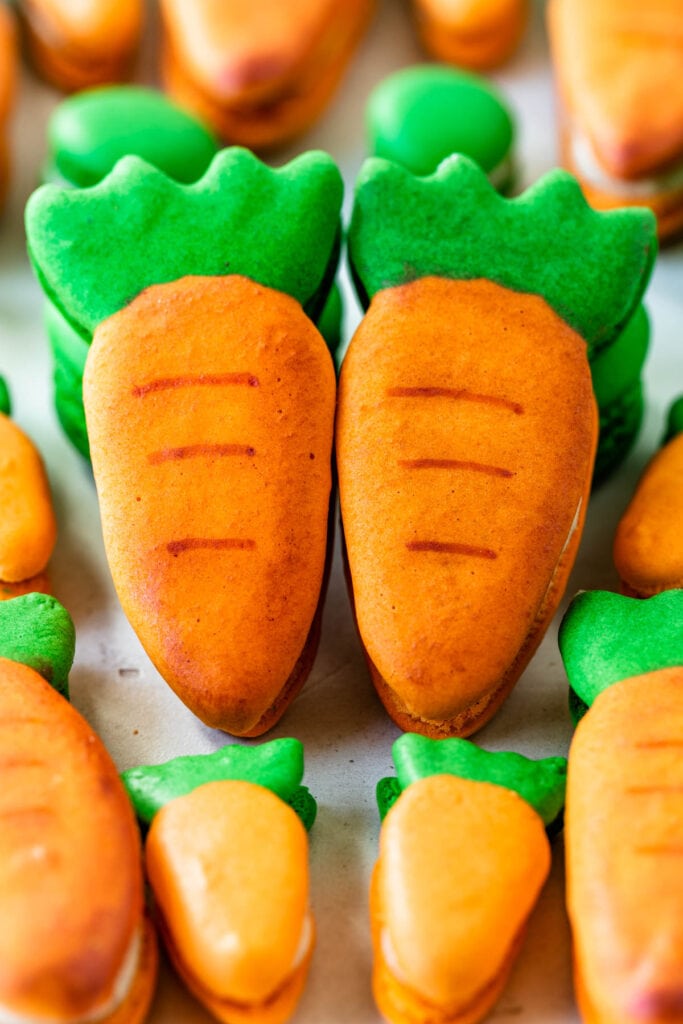
To use the carrot macaron template, start by piping with the orange batter.
Start at the bottom of the template.
Pipe all the way to the top, and then back down to the bottom, and finish in the center.
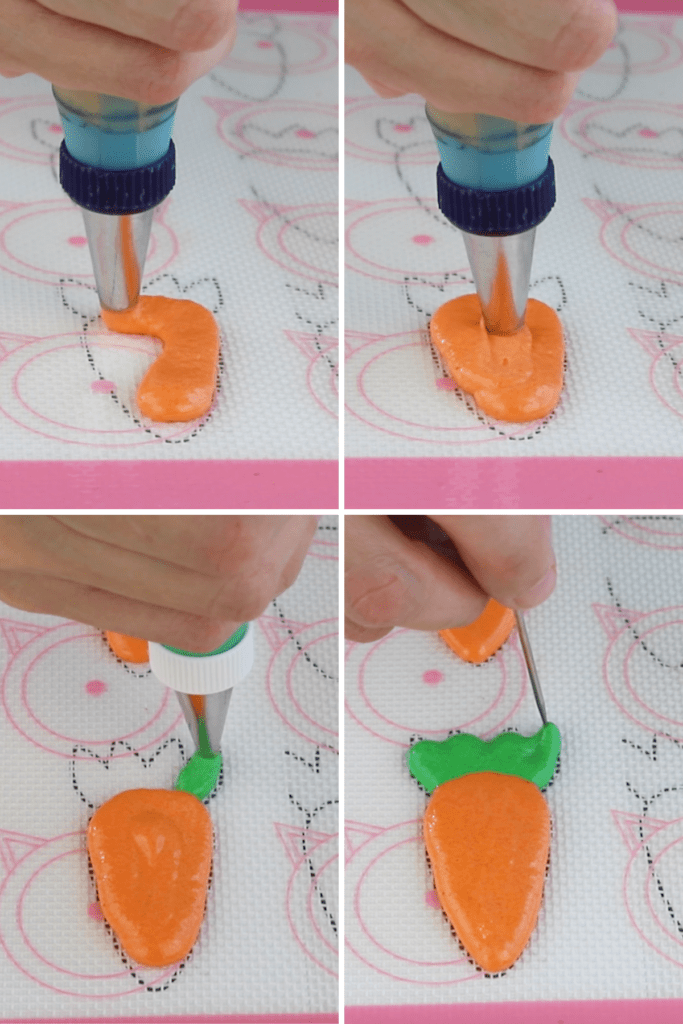
Once the orange part has been piped, time to make the green leaves, by piping each leaf from the bottom to the top, making sure the orange batter and the green batter are meeting and also have the same thickness.
Use a toothpick to make the leaves pointy, and to pop any air bubbles, or to smooth the batter if necessary.
You can also use the toothpick to make the bottom of the carrot pointy.
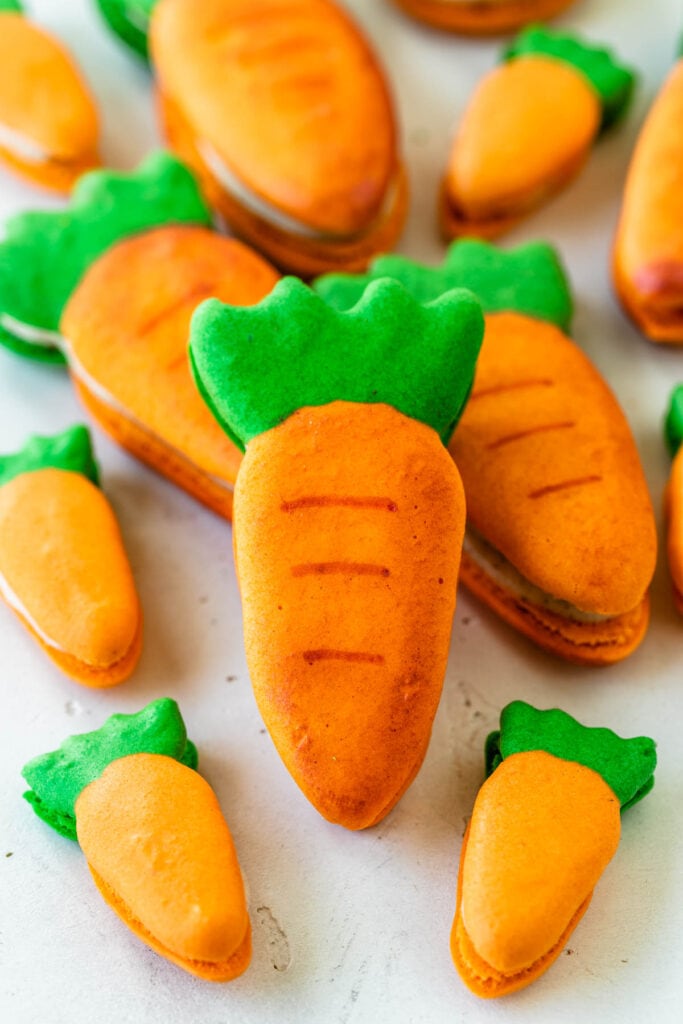
Make sure to let the macarons rest all the way until they are dry before baking.
Shaped macarons always must rest, or they will crack, specially where the batters meet.
The macarons also must rest because that will help their feet. Usually shaped macarons tend to have smaller feet. A longer resting time will improve the feet on the macarons.
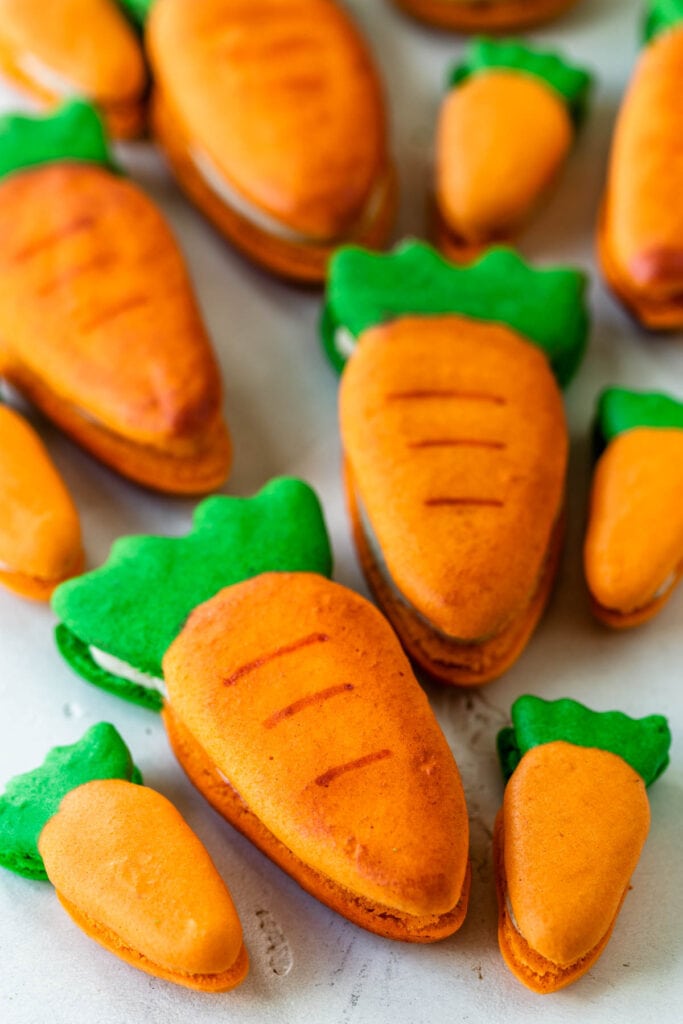
Tips on piping Carrot shaped Macarons
- Use a tip 8 or 10 to pipe the orange part.
- Use a tip 3 or 4 to pipe the leaves.
- Make sure both batters have the same thickness.
- Also make sure the batters meet, and there isn’t any space in between the orange and green part, that can also cause cracking.
- Let the macarons rest until they are completely dry to the touch, they should have a skin on top.
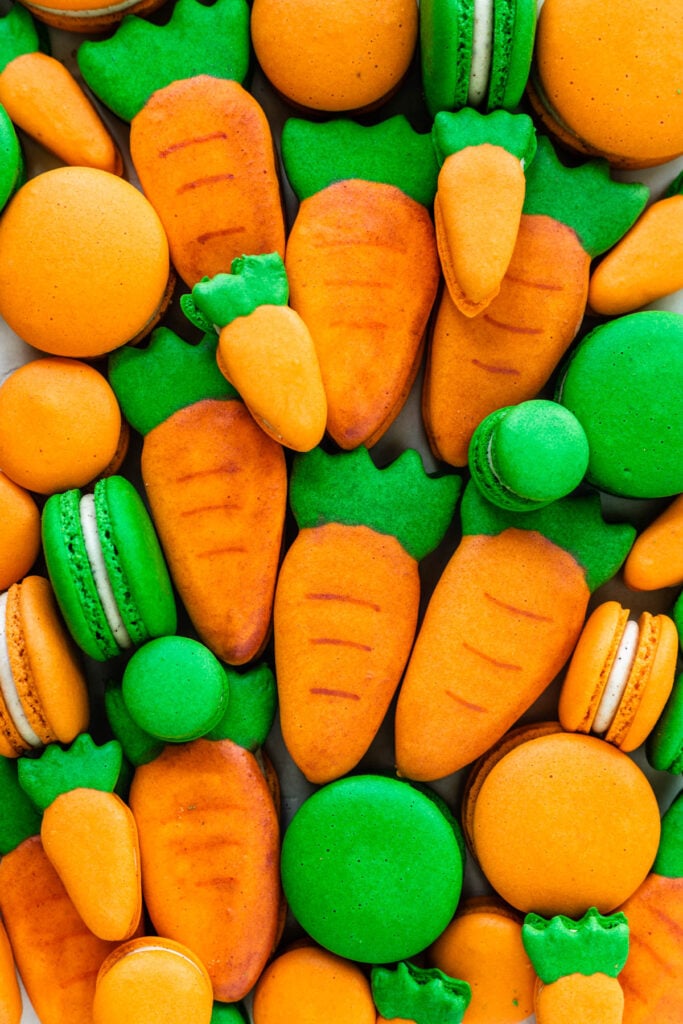
To decorate the macarons, draw three lines using orange edible marker. Then use orange luster dust to brush around the edges of the carrot, and around the lines, to create shadows and depth, which should make the macarons beautiful!
For the filling, I used the same filling that can be found on these Carrot Cake Macarons, which is carrot cake in the center, and cream cheese frosting around.
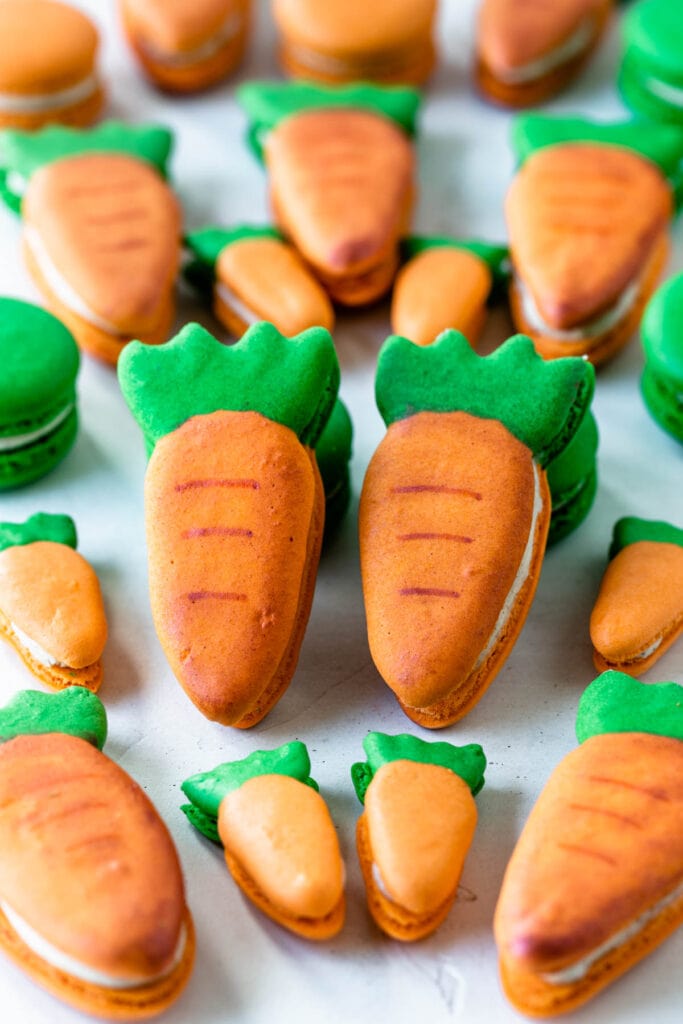
If you like this Carrot Macaron Template and these carrot macarons, you may also like these posts:
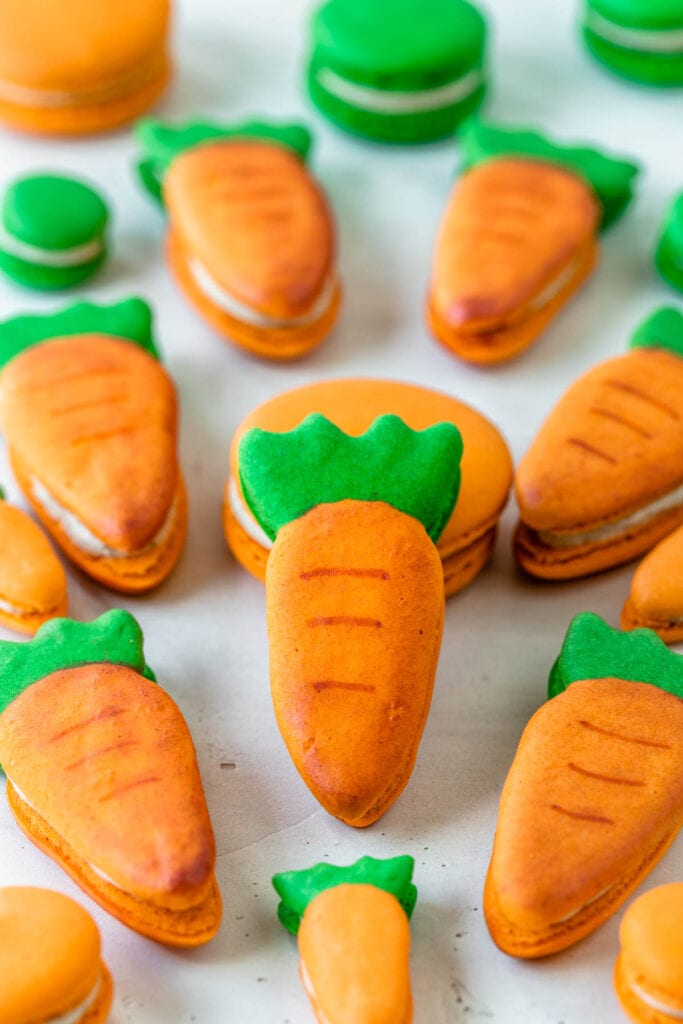
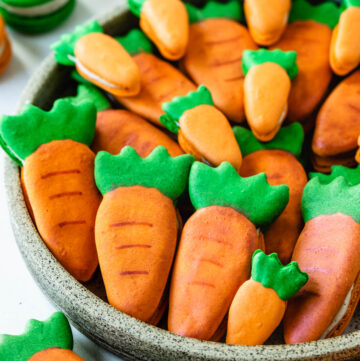
Carrot Macaron Template
Ingredients
- 100 grams white granulated sugar
- 4 grams egg white powder optional read notes below
- 100 grams egg whites
- 105 grams almond flour
- 105 grams powdered sugar
- Food coloring green and orange
Instructions
Prep the ingredients and tools
- Before you start, get all of the ingredients ready. Prepare two large piping pastry bags, fitted with 8 or 10 round tip, and with a 3 or 4 for the green part.
- Line two baking sheets with parchment paper or silicone mat.
- Download the carrot template from the post above and print it, place under your mat and set aside.
- Wipe the tools such as bowls, spatulas, and silicone mats with vinegar if desired, this helps getting rid of any grease particles that might be in the tools.
- Measure out all of the ingredients.
- Sift the powdered sugar and almond flour together. Set it aside.
- Start pre-heating the oven. I pre-heat my large oven to 310ºF for 60 to 90 minutes, this helps with temperature fluctuations. I pre-heat the countertop oven for 30 to 45 minutes.
Meringue
- Place a bowl over a pan with barely simmering water. Add the sugar and egg white powder to the bowl if using. If you’re not using egg white powder simply skip it, nothing needs to be changed in the recipe.
- Whisk the sugar and egg white powder so it doesn’t clump up.
- Add the egg whites to the bowl and whisk until the sugar is completely melted. It will take a couple of minutes. You can test by touching the mixture between your fingers, and if you feel any sugar granules just keep whisking the mixture over the water bath.
- Make sure the bottom of the bowl isn’t touching the simmering water because you don’t want the whites to cook.
- Also, don’t overheat the sugar syrup, you are just looking to melt the sugar, no need to bring it to a certain temperature.Transfer the syrup to the bowl of a stand mixer. Before transferring the syrup, you might consider whipping the bottom of the bowl with a towel so the water doesn’t fall into the mixer bowl.
- With the whisk attachment, start whisking mixture on low (speed 2 of the KitchenAid) for about 30 seconds, then gradually start increasing speed to medium. Whisk on medium (speed 4) for one to two minutes, until the mixture is white and starting to become fluffy. Raise the speed to medium or medium-high and whip for a few minutes until stiff peaks are formed. I like to finish whipping the meringue on speed 6 of the KitchenAid.
- It takes me about 13 to 15 minutes to whip the meringue, but you shouldn’t go by time, go by what the meringue is supposed to look like because a lot of things can affect whipping time, such as the quality of the eggs, the weather, how powerful your mixer is, and more.
- Once the meringue gets glossy and you start seeing streaks formed by the whisk, and the meringue raising in the center of the whisk, it might be time to stop.
- You don’t want to over whip the meringue at this point because that can cause several issues, mainly hollow macarons.
- Whisk until stiff peaks have formed. When you pull the whip up, the peak should be stiff and shooting straight up, with possibly a slight bend at the top, but not bending to the side.
- Also when you swirl the whisk around in the bowl to collect the meringue, you should feel some resistance from the meringue. And when you look on the bottom of the whisk the meringue collected should be forming soft but defined waves.
Macaronage
- Pour the sifted powdered sugar and almond flour into the stiff meringue.
- I made the batter into 2 different colors.
- Start folding gently forming a letter J with a spatula.
- As soon as you see no more dry ingredients in the meringue, stop stirring. Divide the batter between two different bowls.
- Work with one bowl at a time, leaving the other one covered meanwhile.
- To the first batter I added orange food coloring. Fold the batter until the perfect consistency is achieved.
- How to know when to stop folding the batter: It’s time to stop folding when the batter is glossy and has a thick and flowing consistency. There are several ways to test this.
- First, pick up some batter with the spatula and try to draw a figure 8 with the batter that is dripping off the spatula. If you can form several 8 figures without the batter breaking up, that’s one indication that it might be ready.
- There’s another test you can do. I call it the Teaspoon test.
- Grab a teaspoon of batter and spoon onto the parchment paper or silicon mat. Wait a minute to see how it behaves.
- If the batter stays stiff, forming a point and doesn’t spread out, fold a little bit more, about 3 folds. Test again.
- Once the batter spreads out a bit and starts to look glossy and smooth on top, on the parchment paper or silicone mat, it’s ready.
- You don’t want your batter to be too runny either. So be careful not to over mix. It’s always best to under mix and test several times until the proper consistency has been achieved.
- When you hold the spatula with batter on top of the bowl and the batter falls off the spatula slowly but effortlessly the batter is ready. The batter will keep flowing off the spatula non-stop, but not too quickly.
- Transfer the batter to the piping bag. Seal the top with a bag tie so the batter doesn’t dry out.
- Now, it’s time to work with the second batter. To this batter I added a bit of green food coloring, then fold until the perfect consistency is achieved, like I’ve explained above.
To pipe
- Start piping at the bottom of the carrot template. Drag the piping bag up and around, back to the center, to form the carrot shape.
- Then pipe the leaves on top.
- Use a toothpick to smooth out the batter and pop any air bubbles.
- Make sure the green batter and the orange batter are touching, to avoid cracks.
- Also make sure the thickness of both are the same.
- Let the macarons rest until they are dry to the touch.
- I always rest shaped macarons for a long time before baking.
Baking
- On my large oven I bake the macarons at 310ºF, and on the small countertop oven I bake them at 290ºF. I pre-heat both ovens for quite a bit of time. I pre-heat the large oven for 60 to 90 minutes, and the small oven for 30 minutes or so.
- Bake one tray at a time.
- Bake for 5 minutes, rotate the tray. This step is not necessary, I don’t rotate the trays on the small oven, but I have to do so on my large oven, otherwise the macarons will be lopsided. Not all bakers have to rotate the tray.
- I bake each tray for about 15 to 20 minutes.
- When baked, the macarons will have a deeper color and formed feet. If you try to move a macaron, it shouldn’t feel jiggly. If the macaron is still jiggly, keep baking. Also try to touch the top of a macaron and it shouldn’t feel soft, if it’s still soft, keep baking.
- Remove from the oven and bake the other tray.
- Let the macarons cool down before proceeding with the filling.
Storage
- I store the unfilled shells in an air tight container in the fridge for up to 5 days, and in the freezer for 1 to 2 months.
To decorate
- To decorate the macarons, use an edible orange marker to draw three lines across the carrot.
- Dip a brush in orange luster dust, and brush around the edges of the carrot to form some shades and give depth to the macaron.



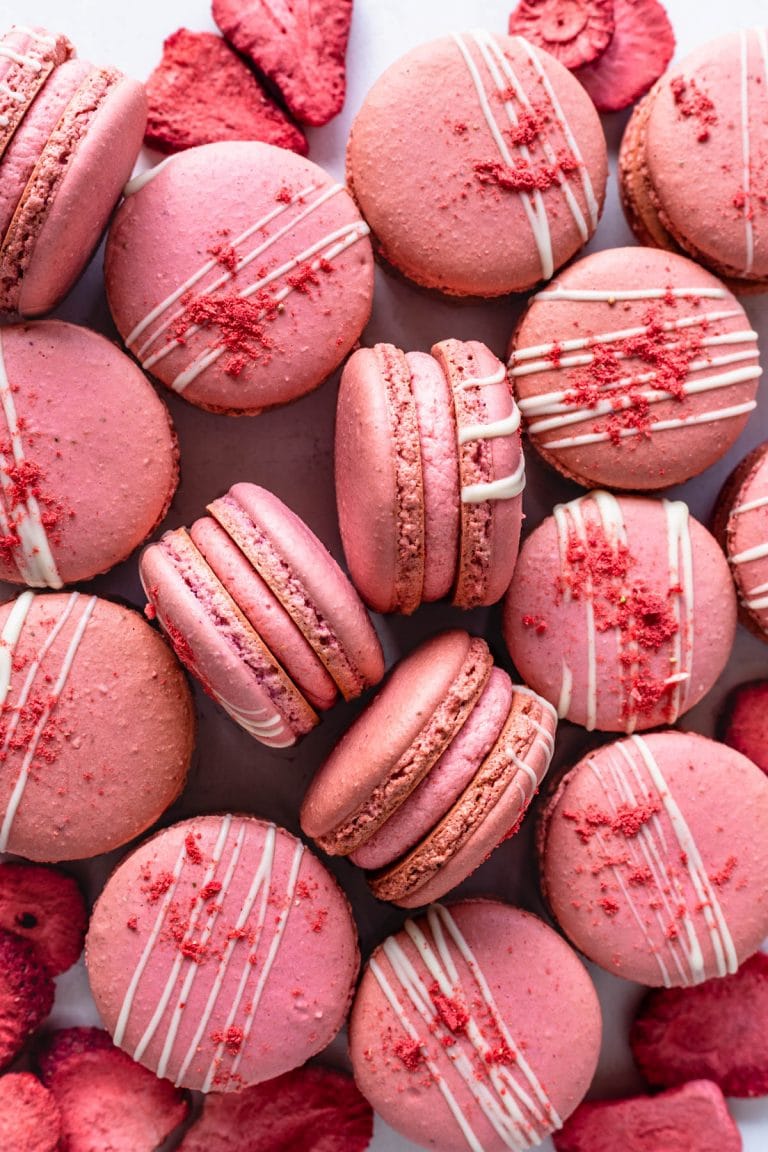
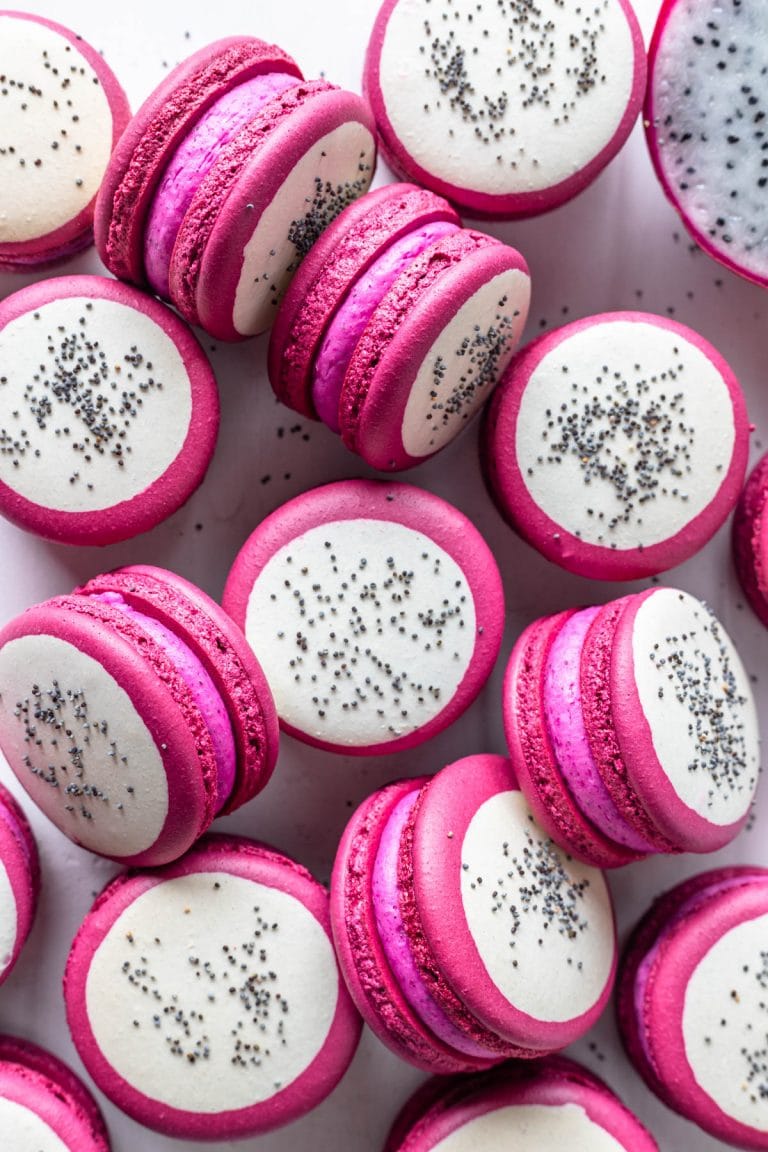
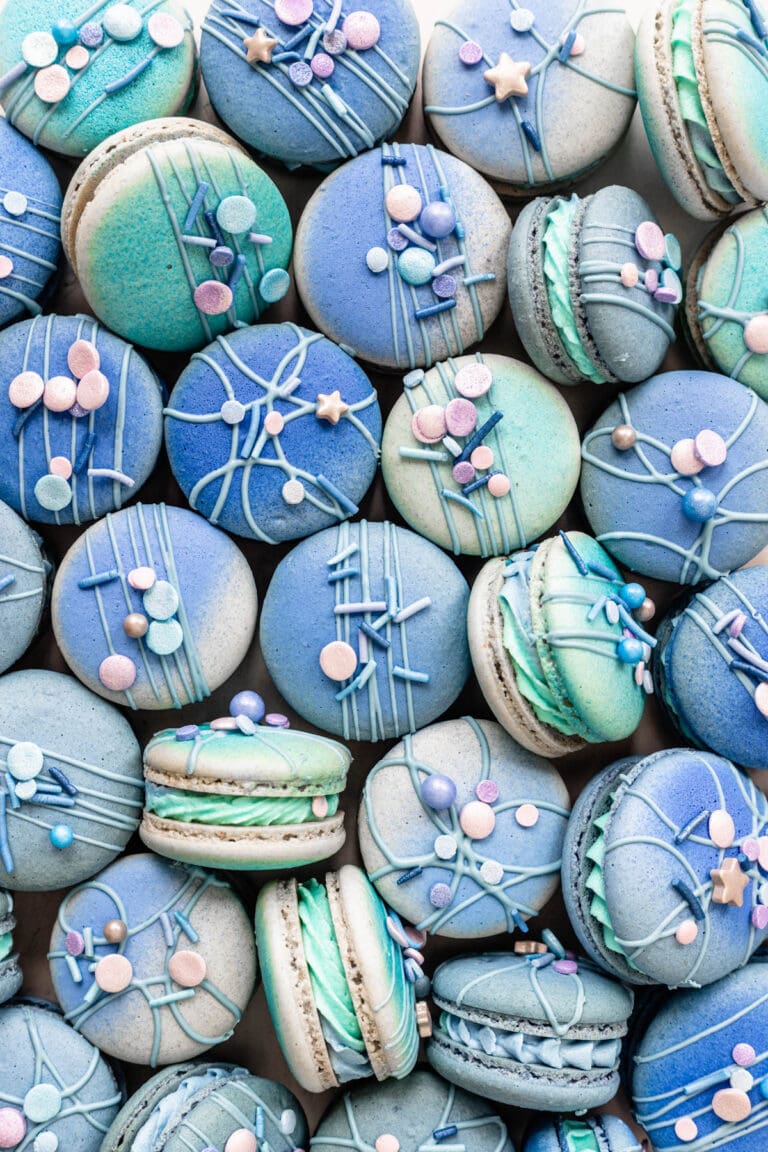
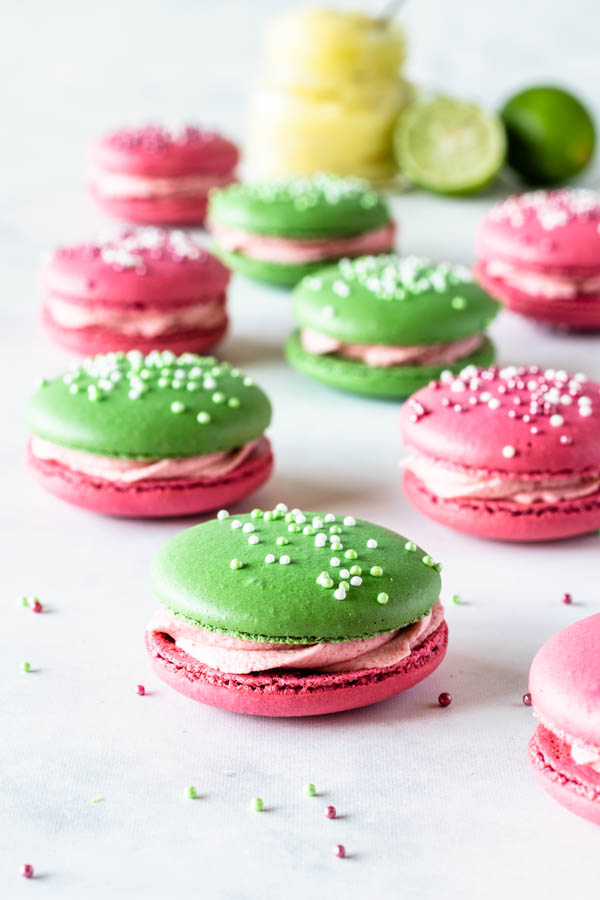
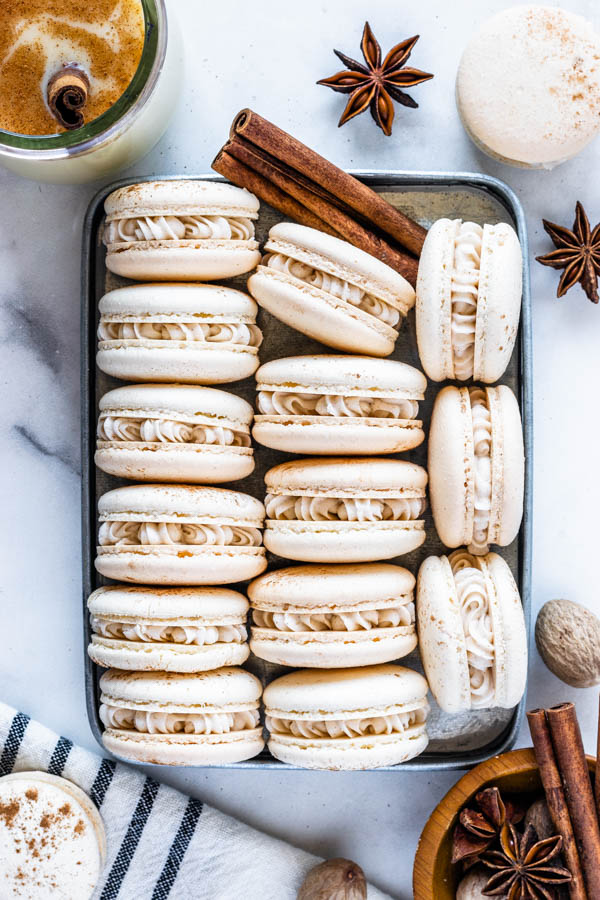
Delicioso!! Adorei a receita! 🥰😋😋😋😋👏👏👏
These are awesome, thanks for sharing